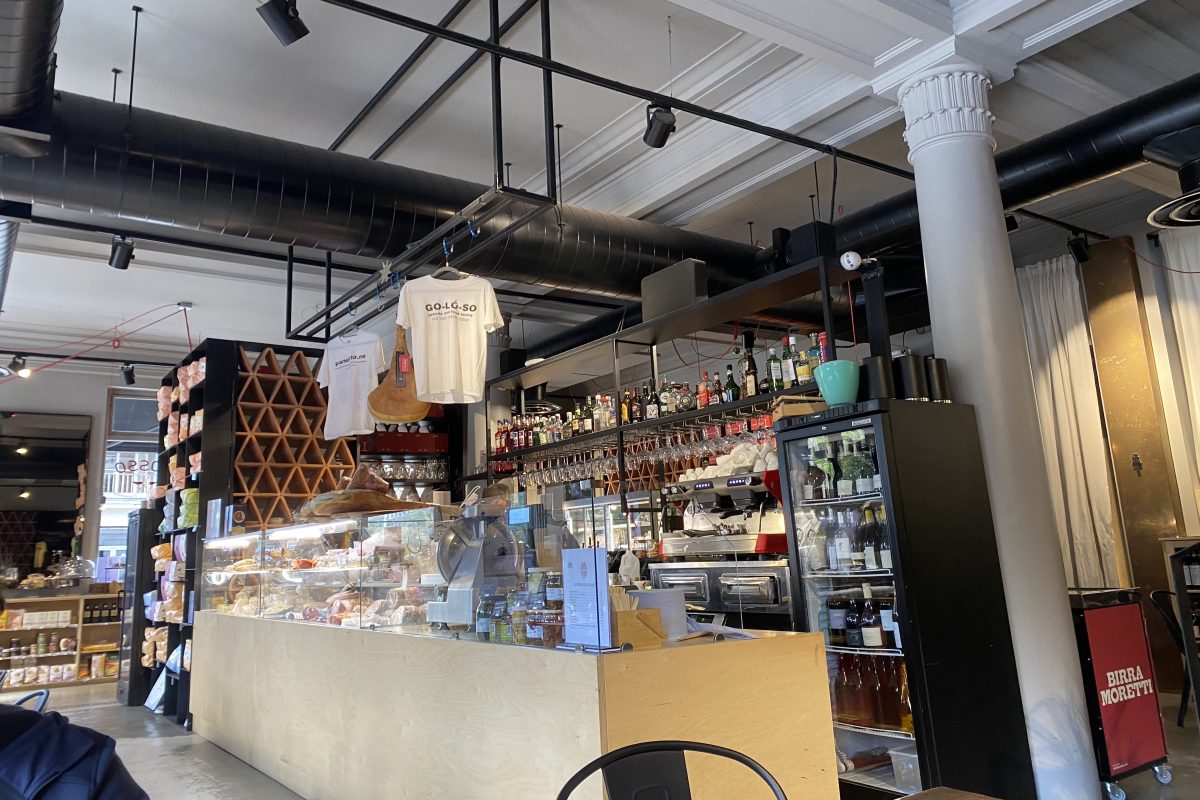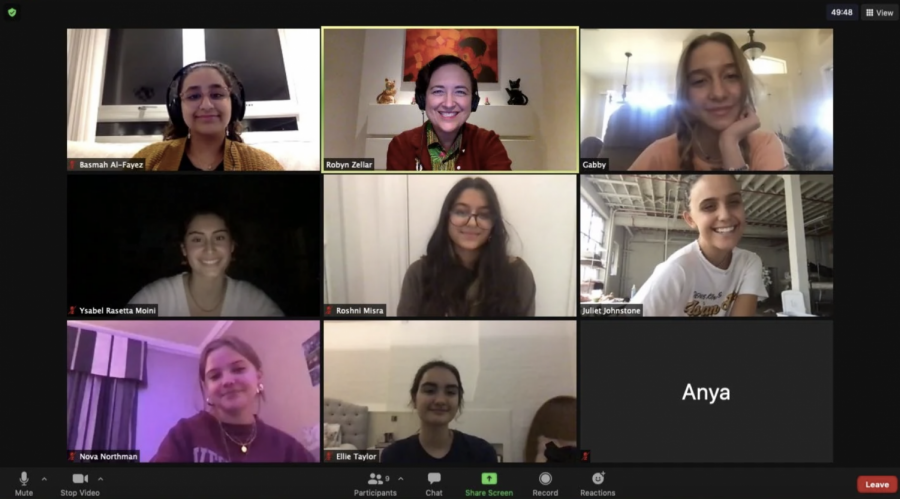According to Business Insider, the fashion industry produces 10% of the world’s carbon emissions and up to 85% of textiles go to landfills every year.
The term “fast fashion” refers to the expedited process in which workers in export-oriented economies, often underpaid and overworked, constantly produce cheaper articles of clothing to keep up with changing trends. This is in contrast to sustainable fashion, which is generally characterized by a brand’s commitment to using ethically sourced or environmentally friendly materials (such as sustainably grown crops or recycled materials), treating and paying its workers well and using renewable energy.
Gabrielle Yurin (’23) takes Fashion Design as one of her electives, and said the fashion industry is facing a cultural shift towards ethical production.
“It’s going to be hard for fast fashion to completely stop, just because it’s such a huge industry at the moment,” she said. “But I think that it’s becoming a trend to be sustainable.”
However, Yurin said that sustainable fashion is not always accessible.
It’s going to be hard for fast fashion to completely stop, just because it’s such a huge industry at the moment. But I think that it’s becoming a trend to be sustainable.
— Gabrielle Yurin ('23)
“Sustainable items are always more expensive than fast fashion,” she said. “The workers are being paid what they’re supposed to be paid, and the materials are more expensive. It’s overall just a more expensive process, so of course you can’t expect everyone to be able to just go and stop buying fast fashion.”
A consumer survey by the E-commerce service Nosto revealed that 29% of consumers would pay more for the same item if they knew it had been sustainably produced. However, the other 71% said they would not be willing to pay higher prices for ethically made items.
SusCo Member Victoria Figueroa (’22) said having to pay more for a sustainable garment is a disincentive for people when purchasing clothing.
“I can admit to it myself, like, if I see a shirt and it’s a white shirt that costs £12 versus one that costs £25, I’m going to want to choose a £12 one,” she said. “You really just have to make a conscious decision of like, ‘it is definitely worth buying this more expensive shirt because I’m paying for more than just the shirt.’”
Figueroa helped to organize the Sustainable Fashion Show last year that was eventually canceled due to the pandemic. She said SusCo chose to do the show because fashion was a new and interesting angle to use in educating people about sustainability.
Figueroa said she recognizes the ability to purchase sustainable clothing is a privilege, but wanted the school community to at least have some information.
When you are looking at clothing and you know that it’s made there and you see who makes the clothes, it just really changes the way that you think about your clothing. You can’t shop for clothing in the same way that you used to.
— Visual Arts Teacher Robyn Zellar
“We wanted to tell them, like, ‘it’s up to you,’” she said. “You’re the one that pays the stores. Nobody’s forcing you to buy from them, so it’s up to you to do your research. Know what sustainable fashion looks like.”
Visual Arts Teacher Robyn Zellar said that as brands adapt to the demand for sustainability, this difference in price may not always be so dramatic.
“The way we buy will change the way we make,” she said. “If everybody changed the way that they bought clothes, that price would go down.”
Zellar, who educates students on sustainability in the Fashion Design elective, spoke about her time in Cambodia, when she saw garment workers crowded into trucks travelling to work. She said she learned that H&M, a store she used to purchase from, had clothing made in Cambodia.
“When you are looking at clothing and you know that it’s made there and you see who makes the clothes, it just really changes the way that you think about your clothing,” she said. “You can’t shop for clothing in the same way that you used to.”
Zellar also said it is important to educate the next generation on where and how the clothes they wear are produced, so they can make educated choices as both designers and consumers.
Furthermore, Zellar hosted a Zoom meeting for her class Nov. 24 with 25 year old LA-based sustainable fashion designer Juliet Johnstone. Johnstone’s printed tees and pants are worn by Bella Hadid and Dua Lipa, among other celebrities.
Yurin said that seeing “cool, young designers” leading sustainable brands broadened her view of what sustainability means and how she can be a part of it.
It’s very much a supply and demand. It’s up to the people who do have the power and the ability to make those choices to help change everything.
— Victoria Figueroa (’22)
Additionally, Zellar said that sustainable fashion is not always expensive. She said there are some less expensive alternatives that do not include purchasing from fast fashion retailers, such as shopping second-hand.
“I don’t think that having a sustainable wardrobe is inaccessible to anyone,” she said. “If you want to have a sustainable wardrobe, you definitely can have one. You just have to have that desire.”
Good On You ranks brands on their environmental practices and working conditions, then suggests similar sustainable options. Thrifting and purchasing from secondhand stores is another option. Reselling apps have emerged as yet another option for people hoping to avoid supporting unethical production practices while paying affordable prices.
Yurin said people looking to make changes to their shopping habits should start off with apps such as Depop and Poshmark.
“It’s so easy to get into,” she said. “It’s so similar to social media, but you’re doing something good at the same time. And it’s fun.”
Ultimately, Figueroa said that if many people make changes to how they purchase, the fashion industry will slowly shift towards sustainability. And, she said those who can already afford sustainable clothing should try to be conscious of their purchasing habits.
“It’s very much a supply and demand,” she said. “It’s up to the people who do have the power and the ability to make those choices to help change everything.”








lucia • Feb 11, 2021 at 10:37 pm
love it!